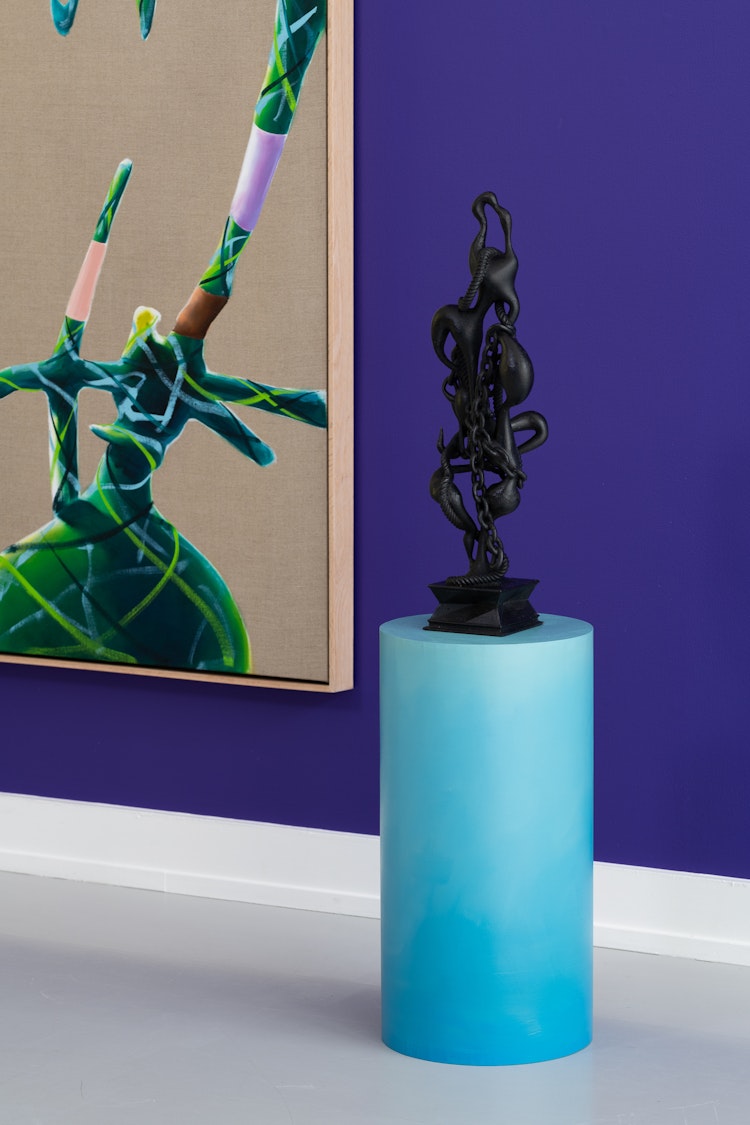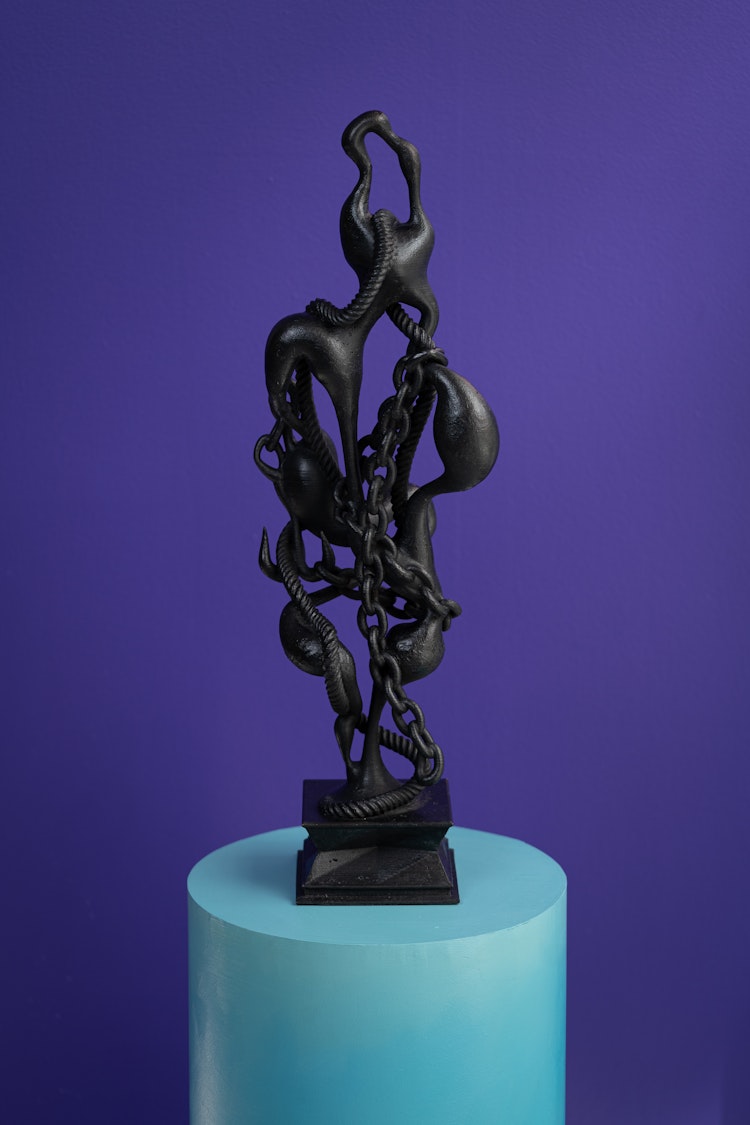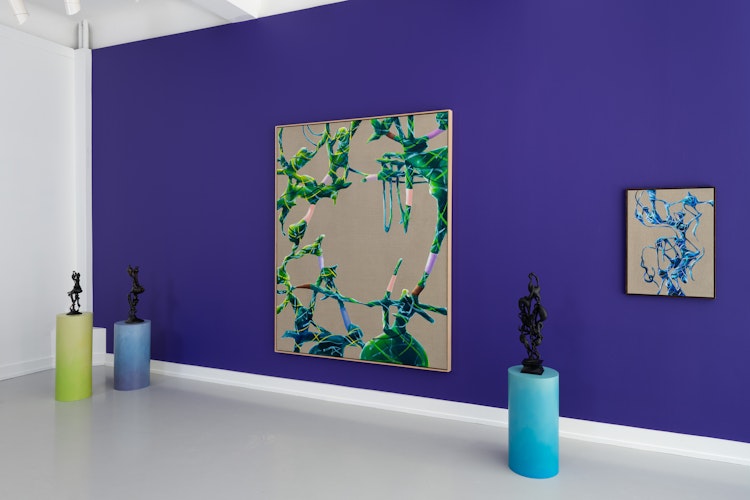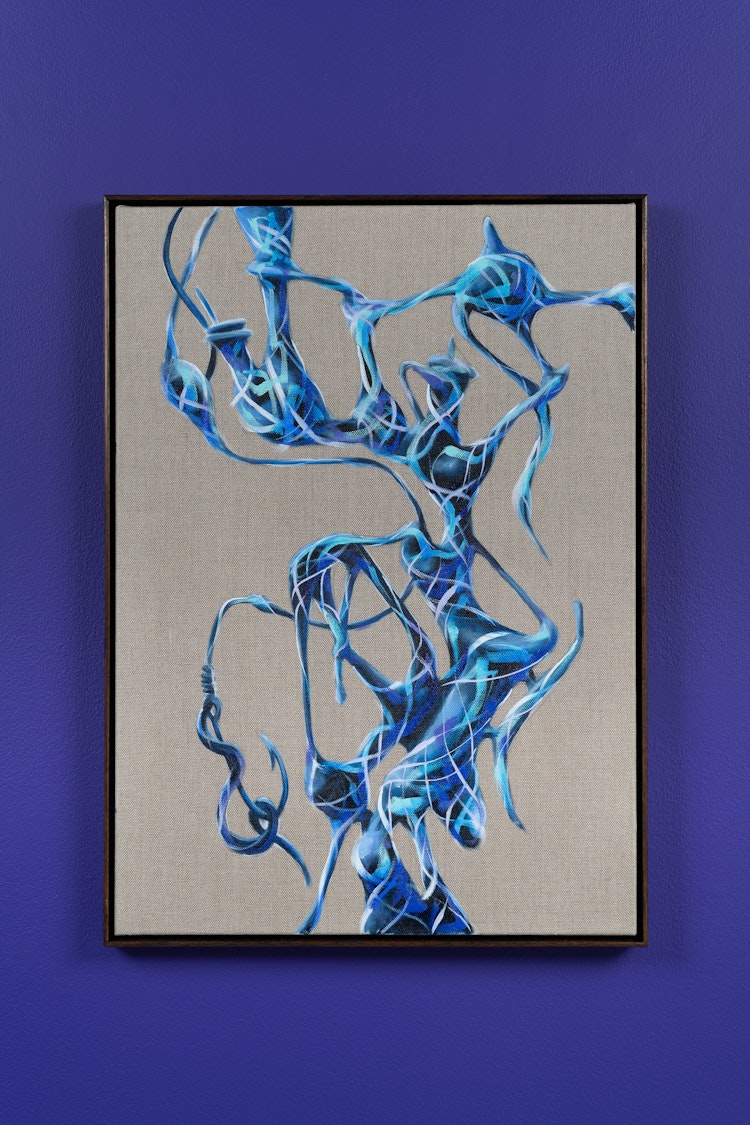Curse, Effect


The term “causality” describes the relationship between cause and effect, between A, B, and how they are related. “Determinism” refers to the idea that everything that will happen has already been determined. Cause and effect become curse and effect. Hence the title of the exhibition at QB Gallery where Norwegian artist Lars Morell is presenting his new works.
New works? Can something be new that was already predetermined according to the principle of determinism? Over the past few years, Lars Morell has created a complex and diverse body of work consisting of photographs, sculptures, and installations. Up until now, classical painting has not been a central part of his artistic oeuvre, though it has always been present. Much of his work thus far has grown out of detailed drawings. Previous works, such as the shadow canvas series, began with an initial sketch of pencil on paper. Photographs also served as “sketches” for these works. Following the initial sketch, Morell used collage as a way of approaching the final result. After that, the images were digitally edited, over and over again - the perspective was adjusted, distortions was inserted and removed, filters applied, and 3D effects generated. This resulted in a final digital file that was then industrially reproduced to serve as a guide for the spray painting process of the shadow canvases. It was then transitioned from sketch to canvas. The material of these works drew on Morell’s interest in photography and its history, as well as illusionism and the machines that were used for different stage tricks. The result was flat paintings that showed photographic and digitally generated images. The silhouettes of shadows looked so deceptively realistic that one could wonder where the actual light source was.
The drawings, which formed the basis for all of Morell’s work, and which up to this point were only used as preliminary sketches, are now important templates and direct preparatory work for the paintings in this exhibition. They are “Cause A”, so to speak. Compared to earlier, the entire process is now more analog and direct. The steps previously carried out by filters and effects through the computer – are now performed in the artist’s mind and are processed and incorporated directly onto the painting. We might say that the new canvas works were born out of the “shadows”. They grew out of flatness into the space, and moved towards abstraction. They were also created directly by the artist’s hand, and they are rougher, more vulnerable and approachable than previous works, which were grounded in an aesthetic of industrial production and a consistent perfection.
These distorted shapes, which now “grow” over the canvas, are constructed from the drawings and yet they are created organically in one go. Small mistakes in the process are not corrected, but incorporated. They define the direction of cause-and-effect. The paintings may be planned, but they undergo change naturally. We see coloured constructs that at first glance are reminiscent of branching root systems. In some cases it seems as if they are growing beyond the canvas, in others into the centre of the composition. Along the way, these constructs are “devouring” something. We recognise the outlines of chains and hooks – and thus again objects that are used in illusion and deception. Morell develops these works out of figuration and sees them as distorted still lifes, as a dilemma between abstraction and representational painting.
The colourfulness is one striking feature of these paintings. The artist uses domestic objects and translates them into abstraction. Morell works with contrasts and patterns in order to create perspectives, but also to highlight specific layers in the paintings. The inspiration for the colours and contrasts comes from a wide range of sources, based partly on historical paintings, things seen on TV, or scenes from everyday life. The background of some of the canvases is filled in, while in others the raw canvas is exposed. In the latter case, the painted area is clearly lifted from the surface. Even if Morell is taking a different approach, Wassily Kandinsky comes to mind. The artist, as described by Kandinsky in his 1912 publication Concerning the Spiritual in Art, has two means of producing a purely painterly composition:
He further describes the possibilities that these two means have. The form can exist independently, as a representation of the object (real or non-real) or as a purely abstract delimitation of a space, a surface. Colour cannot do that: one can only imagine its limitlessness. Kandinsky also speaks of an inevitable relationship between colour and shape and the effect that shape has on color. Lars Morell’s work is not based on Kandinsky ideas, but there are indeed interfaces with regard to the effect of form and colour, and the complexity of composition.
Another important part of the show, and Morell’s artistic oeuvre, are his bronze sculptures that in this particular case seem to have been born out of the canvases. They are clearly engaging in dialogue with each other. Again we see silhouettes of objects, again the still-life motif is taken up. The metal itself and how it was processed is part of what interests Morell here. Similar to his working method on the canvases, which create constructs, the liquid metal paves a predetermined path for itself. Here and there a flaw is visible, but it continues to grow.
The exhibition Curse, Effect stands as an exciting turning point in the oeuvre of Lars Morell. On the one hand, he continues a working method and an interest that has been developed over the years. On the other hand, he surprises us with these new works and new approaches of a particularly technical nature. The handling of the material is now much more direct. Morell does not use traditional artistic techniques for the purpose of nostalgia, but to be closer to his work, that is, with his hands, so as to shape the work directly. In this sense, this is a radical decision and a most timely one. As a result of the causal determinism, it was clear that this would happen. One cannot become an artist – one can only accept or reject the gift. As Louise Bourgeois once pointed out, being born an artist is not only a privilege but also a curse.
___
Fabian Schöneich
Fabian Schöneich is a curator, writer, and editor based in Berlin, Germany. From 2014 to 2018 he was the curator of Portikus in Frankfurt. He worked as an assistant curator at the Kunsthalle Basel from 2012 to 2014 and curated the 2013 and 2014 editions of the Performance Project of LISTE Art Fair in Basel. In 2011, Schöneich co-organised the „Melanchotopia" exhibition and programme as an assistant curator at the Witte de With Center for Contemporary Art in Rotterdam. Since 2012 he worked as an advisory curator for the exhibition space SALTS in Basel/Birsfelden and from 2015 to 2017 as an advisor for the Focus, Frame, and Live sections of Frieze art fair in London and New York. In 2010 he curated the first solo exhibition of Lars Morell in Switzerland at the non-profit art space Perla-Mode. Recently he has edited a comprehensive monograph with the artist duo Daniel Dewar & Grégory Gicquel titled "Body of Work" as well as a monograph titled "Magic Center" with artist Ade Darmawan.












What are you looking for?